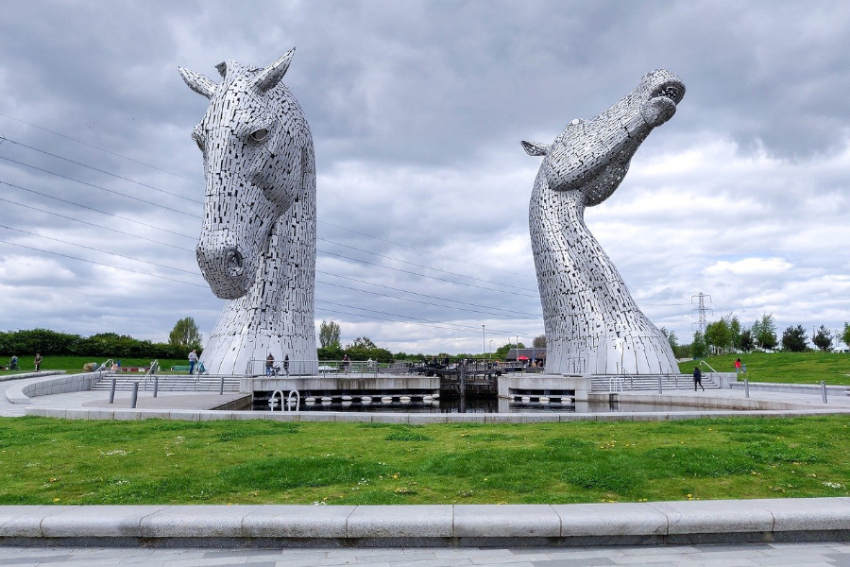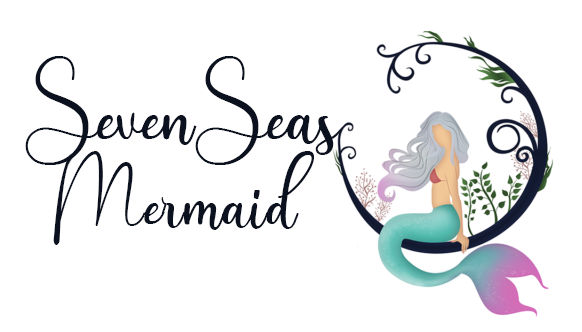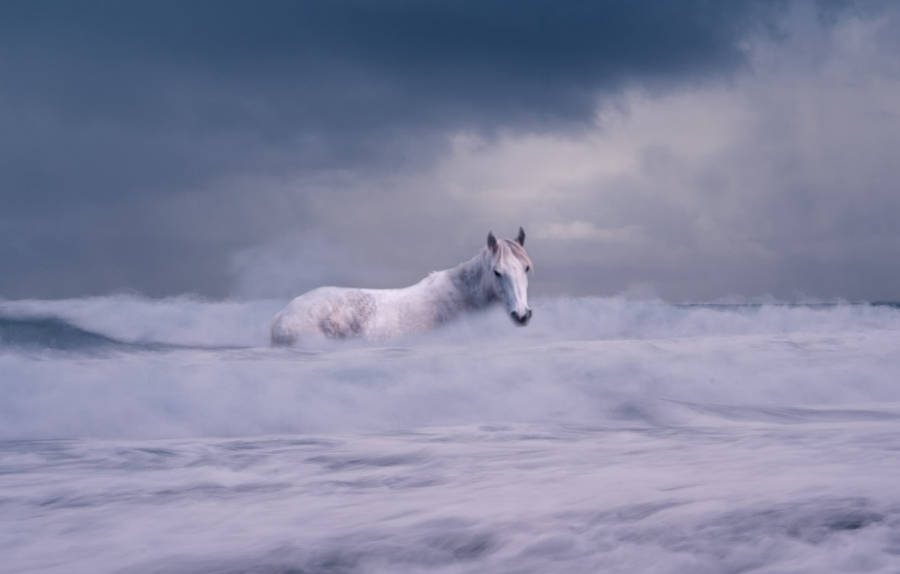There are many water spirits from folklore around the world, most of which take on the form of a human or mermaid. There is however a water spirit in the form of a horse that stands out from the rest.
A water spirit in the form of a horse is a kelpie from Scottish folklore. Other words for these water spirits are nuggle (Shetland Islands), tangie (Oarkney Islands) and the ceffyl dŵr (Wales).
The Kelpie horse has a very interesting history and way of tricking people which I will describe in the following.
The Water spirit in the form of a horse that likes to drown its riders
As mentioned the kelpie has 3 counterparts in the Scottish islands as well as in Wales. There are only minor differences between them if at all. Futhermore, there are 2 very similiar creatures in Scandinavian folklore. Here is an overview:
| Water spirit in the form of a horse | Origin |
| Kelpie | Scotland |
| Nuggle | Shetland Islands |
| Tangie | Oarkney Islands |
| Ceffyl Dŵr | Wales |
| Bäckahästen | Southern Scandinavia |
| Nykur | Iceland and Faroe Islands |
The kelpies and its counterparts usually live in streams and rivers. There is mostly one specific kelpie associated with one specific water source.
What they all have in common is their mischeavous character. All of them can get quite dangerous. They are not always evil but like to trick people and in some stories they even drown and eat them.
First they act docile and try to get people to mount them by telling them they can safely carry them to the other side of the river they live in. But if the person actually gets onto their back, they show their true colors and jump into the depths of the water taking the person with them.
As mentioned, there are only small differnces between the counterparts. For example the Nykur from Iceland has a stronger connection to ice because of Icelands icy landscape. When the ice from frozen lakes crack and make a noise, Icelanders say that it is the nykur that is neighing. This made them be extremely careful when crossing ice.
Sometimes they are also compared to the Germanic neck which has a similar character but usually does not take on horse form.
The exact origin of this myth is not clear but it is believed that the kelpie folklore had an important purpose: to scare children so that they would not wander around streams and rivers on their own which could lead to drowning.
The stories of the kelpie might also have been a way to fathom the drowning of children and adults that had fallen into dangerous waters and could not be saved.

What does a kelpie horse look like?
Kelpies are said to be shape shifters. They usually appear in the form of black, dark or white horses which can transform into human men and sometimes women too.
They are said to have a few special features that you can recognize them by when they are in their horse form. One of them is that their hooves are turned backwards, with the fetlock in front.
When they are in their human form it is only possible to recognize them if they still have some seaweed in their hair. But in some accounts they are described to keep the hooves even when they are in human form which lead to some people even associating them with the devil.
What does a kelpie horse do?
As described, the kelpie tries to trick people into mounting them so it can take them into the depth of the water with them.
But there are also some other stories about the kelpies, especially of humans outsmarting them and the human shapeshifted froms of the kelpie being intersted in a young woman.
An example of a story is about a an old man that was sitting on a bridge and stitching a pair of trousers by himself. A local found him suspicious and struck the old man on his head. This made the man instantly turn back into its kelpie horse form.
Another tale (from the Scotish island Barra) describes that a lonely kelpie who transformed himself into a handsome young man fell in love with a young girl. She noticed however that he was a kelpie and removes his silver necklace which turned him back into its horse form and forces him to work at her fathers farm for a year.
Finally she gives him back his necklace and when he once again transformes into the young man it is asked whether it would choose to be a kelpie or a mortal if he had the choice. So he turned to the girl if she would marry him if he turned into a mortal and this is exactly how the tale ends.
What are other water horses?
As said, the kelpie and its counterparts are water spirits that live in lakes and rivers. But they are not the only water horses that exist in mythology.
Other similar creatures are:
- Each Uisge
- Loch Ness Monster
- Hippocampus
The each uisge and the Lock Ness Monster also come from Scotland but show differences to the kelpie.
The each uisge translates to “water horse”. They do not live in rivers like the kelpies but in the sea and sea and freshwater lochs (lakes) and they are much more vicious.
The Loch Ness Monster is confusingly also sometimes refered to as a kelpie. That does however not mean that it is a shapeshifting horse. The word “kelpie” is simply sometimes used as a nickname for water monsters like it is for the water horses in their rivers.
Lastly, there is the hippocampus which stems from Greek mythology and basically looks like a horse with a mermaid tail. You can read more about them here.


